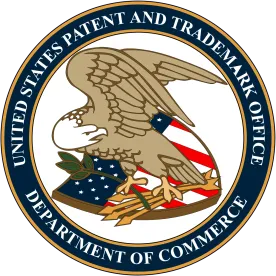In a newly-designated precedential decision, Ex parte Grillo-López, Appeal 2018-006082 (Jan. 31, 2020) (designated Apr. 7, 2020 as Precedential), the United States Patent and Trademark Office (“USPTO”) Patent Trial and Appeal Board (“PTAB”) differentiated the procedures in a pending patent application and an Inter Partes Review (“IPR”) proceeding for establishing whether a document qualifies as a “printed publication” for prior art purposes. The patent applicant here was faced with the same potential prior art that a petitioner presented in IPR proceedings. In the IPR proceedings, the PTAB held that the petitioner did not carry its burden to establish that the publication in question was prior art. In ex parte prosecution, however, the PTAB held that the patent examiner established prior art status sufficiently to shift the burden to the applicant.
The applicant argued, unsuccessfully, that the two holdings are inconsistent. In Ex parte Grillo-López, which was a decision on rehearing of an appeal, the PTAB explained why the holdings are consistent. At the outset, the PTAB pointed out that previous PTAB decisions involving the alleged prior art in question – a transcript of an FDA committee meeting (“FDA Transcript”) – were in the context of IPR proceedings. In those proceedings, a petitioner has the burden of establishing that a document is prior art as part of establishing a reasonable likelihood of showing that challenged claims are unpatentable.[1]
In contrast, in patent application proceedings, a patent examiner who establishes a prima facie case of unpatentability can shift the burden to the patent applicant to rebut the prima facie case. In the case of a document’s asserted prior art status, the PTAB cited precedent indicating, among other things, that a patent examiner can meet their burden of proof by setting forth the nominal publication date of that document. It is then up to the patent applicant to disprove the prima facie publication date that the patent examiner sets forth.[2]
In the present case, after the examiner rejected the patent application on a treatment for non-Hodgkin’s lymphoma, the applicant appealed by arguing that a reference that the patent examiner cited was disqualified as prior art, citing the Hulu decision requiring a higher threshold to rely on printed publications as prior art in IPRs, and arguing that that higher threshold extends to initial examination.
During rehearing in this case, the patent applicant argued that the PTAB erred in finding that the FDA Transcript was sufficiently accessible to the public to qualify as prior art on which the patent examiner could rely. The applicant argued that the PTAB’s original decision of August 28, 2019 in the patent application was inconsistent with the Hulu decision.
In response, the PTAB first explained that USPTO examiners need only present a prima facie case that a document qualifies as a printed publication to shift the burden to the applicant to rebut or disprove that prima facie case. Once the examiner has shown a nominal publication date, the applicant must disprove the presumption that the reference is a printed publication. The PTAB held, “[T]he framework set forth in the Hulu decision for IPR proceedings does not apply to examination”.[3]
In addition to explaining the different frameworks and standards, the PTAB also repeated discussion from its original decision on appeal, contrasting the facts in the IPRs with the facts in the prosecution of the patent application. According to the PTAB, the following facts sufficed to establish prima facie that the FDA Transcript was sufficiently publicly available more than one year before the critical effective filing date for the patent application: the publication of a Notice of Hearing in the Federal Register; ability for interested members of the public to attend the hearing pursuant to the notice; and statutory requirements for public availability of the FDA Transcript. These facts were sufficient to shift the burden from the patent examiner to the applicant to demonstrate that the FDA Transcript was not available to or accessible by the public.
As a procedural matter, in its initial decision affirming the examiner’s rejection, the PTAB relied on facts that the examiner did not present pertaining to the status of the FDA transcript as prior art. Consequently, the PTAB held its affirmance of obviousness to be a new ground of rejection. This means that, should the applicant choose, the applicant has the option of continuing prosecution of the application and presenting evidence to rebut the prima facie status of the FDA transcript as a printed publication.
One key takeaway from this decision is that, in ex parte prosecution, the PTAB appears to be more likely to comb the record to find its own grounds for ruling. Here, the PTAB looked closely at the record in one of the IPRs, and found that the information there – which apparently the petitioner failed to cite – sufficed for the required prima facie status of the FDA transcript as prior art. The second is that, in an IPR, if there are evidentiary arguments to be made, it is up to the parties to make them. The PTAB may, but will not necessarily look for those arguments on its own. The PTAB has a reputation for relying rigorously on the Federal Rules of Evidence, which does not apply in patent prosecution proceedings. Patent practitioners who inhabit both the ex parte and post-issuance USPTO domains should keep this in mind.
[1] Hulu, LLC v. Sound View Innovations, LLC, IPR2018-01039, Paper 29 at 13 (PTAB Dec. 20, 2019) (precedential).
[2] Ex parte Grillo-López at 2, citing a number of cases, including Ex Parte Albert, 18 USPQ2d 1325 (BPAI 1984); In re Antor Media Corp., 689 F.3d 1282, 1287-1289 (Fed. Cir. 2012).
[3] Id. at 3.





 />i
/>i

